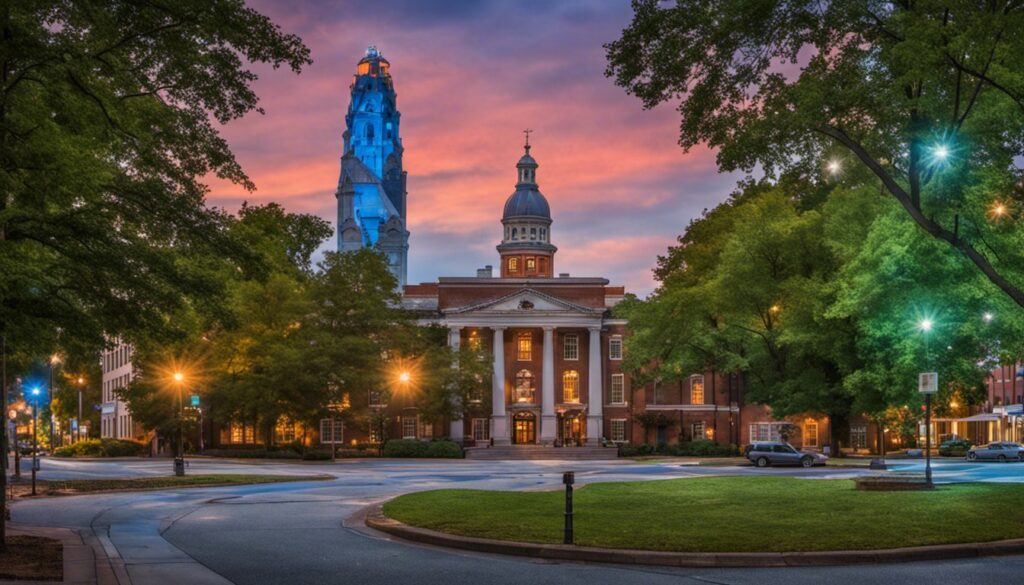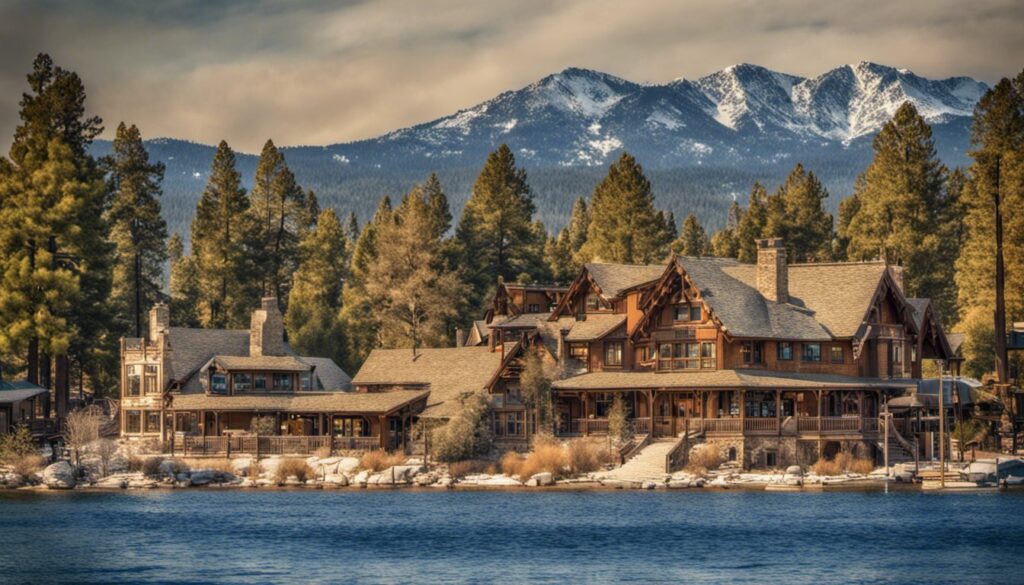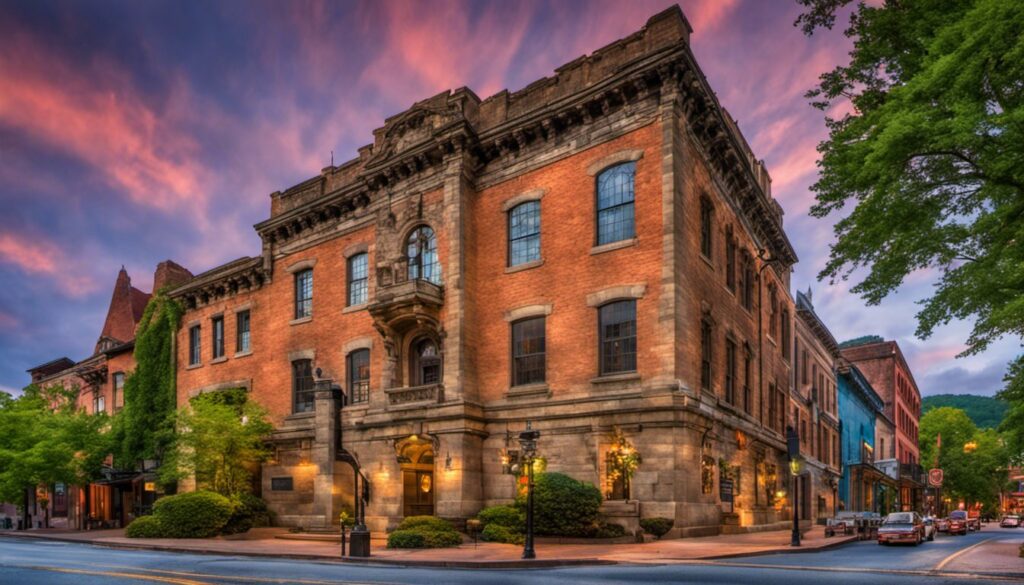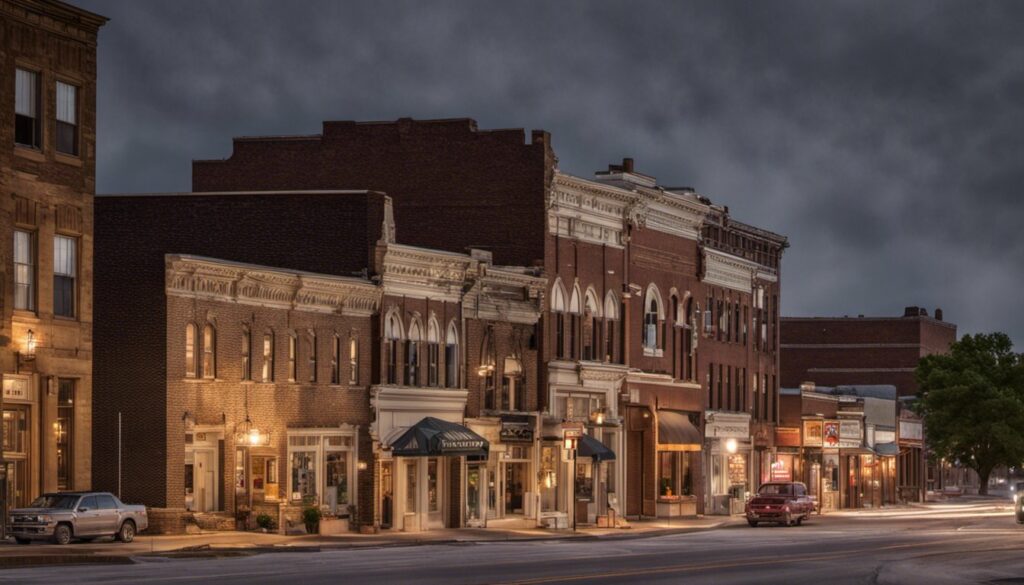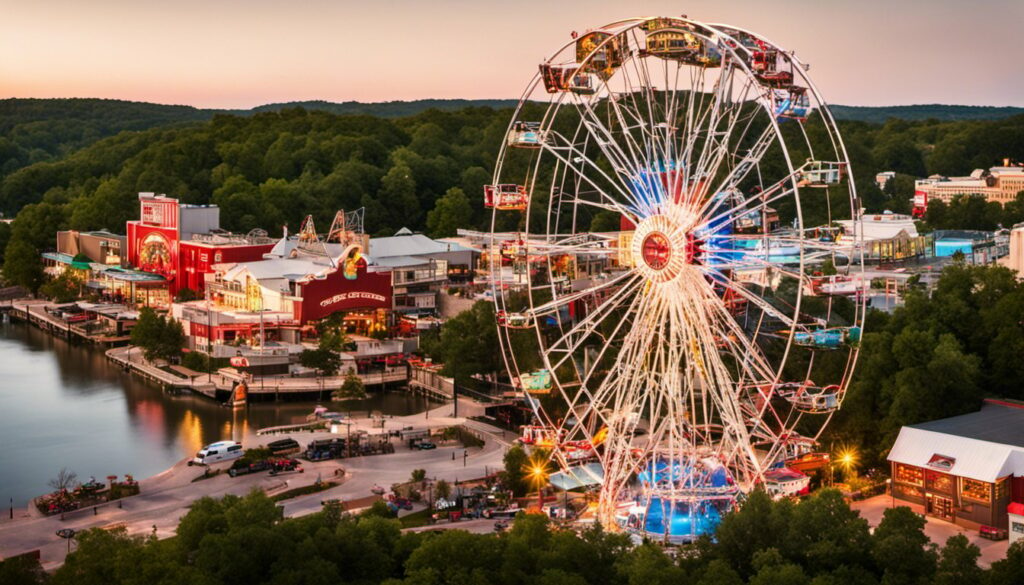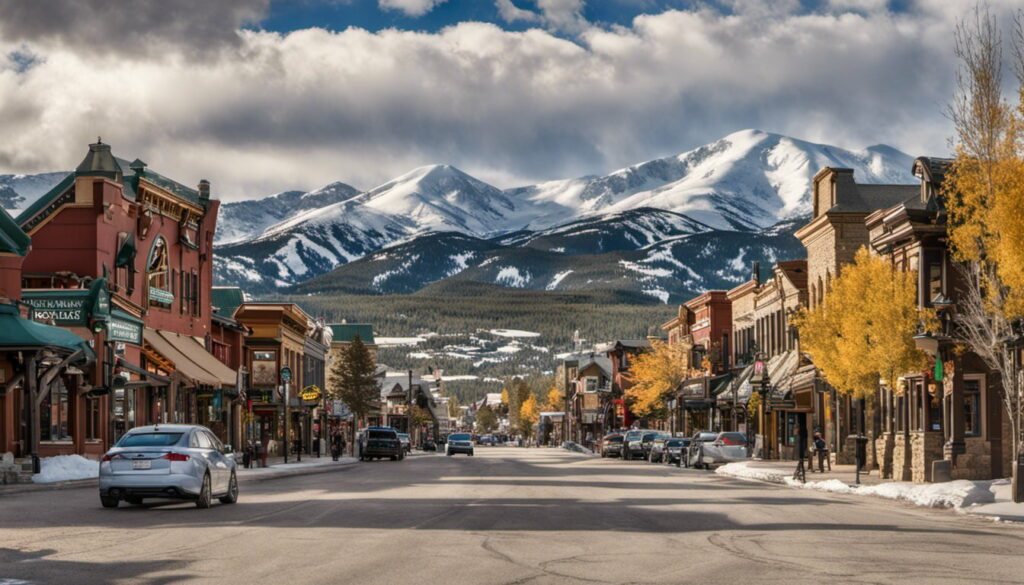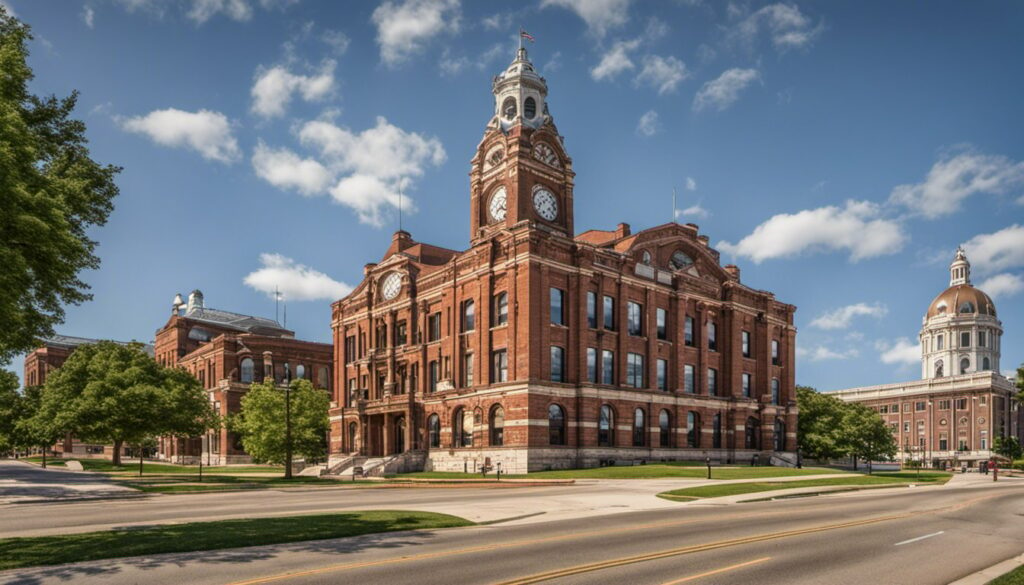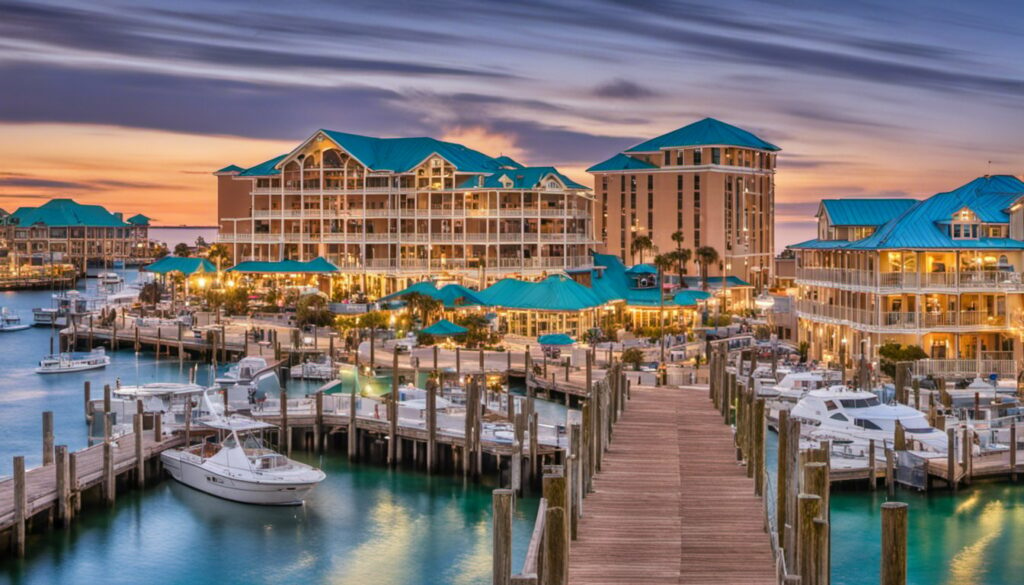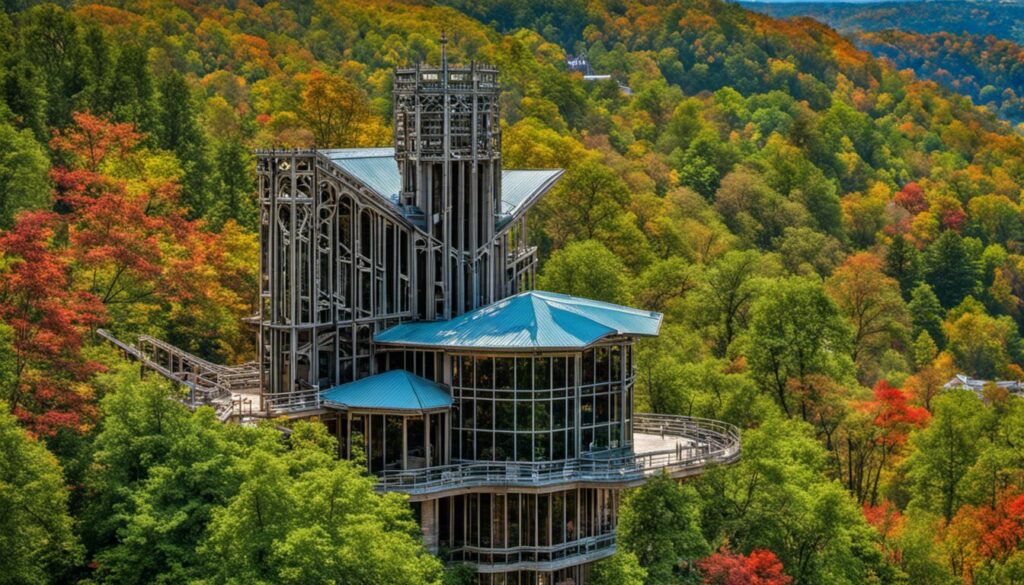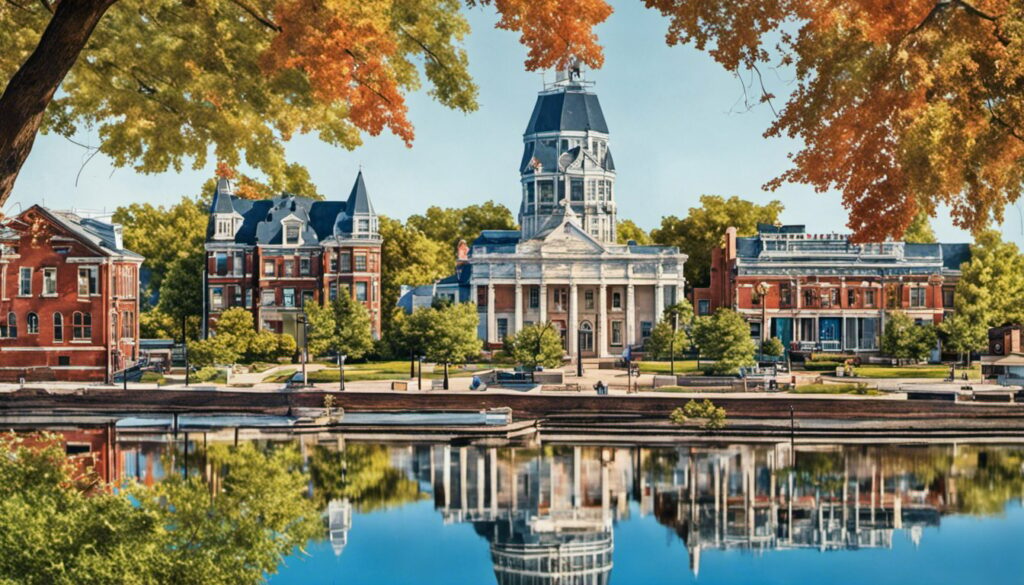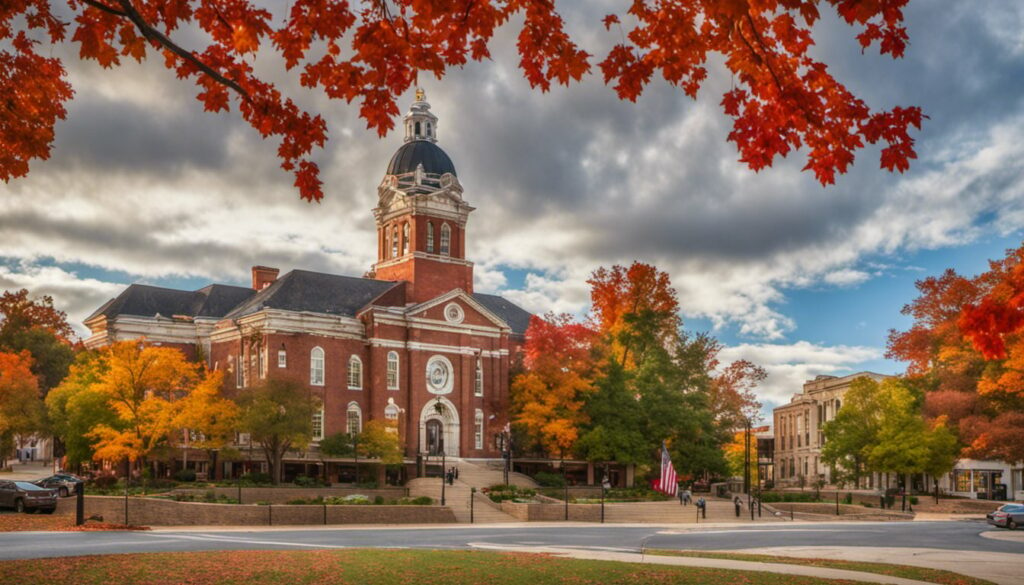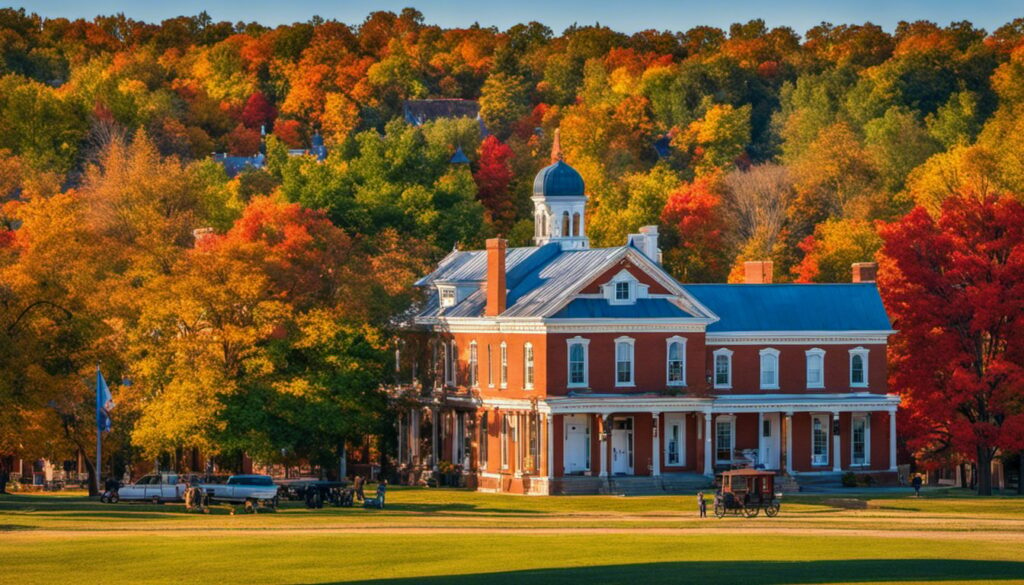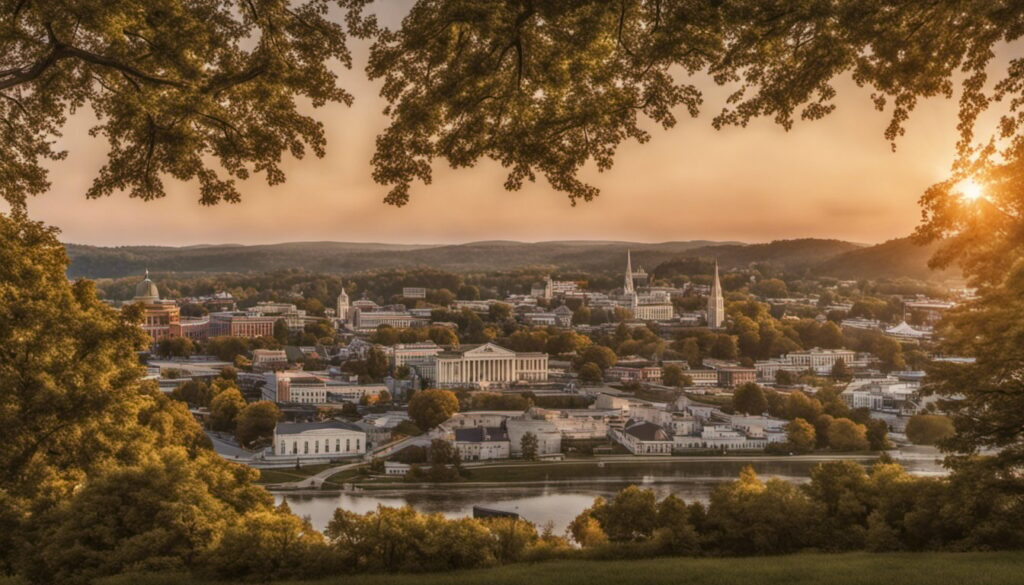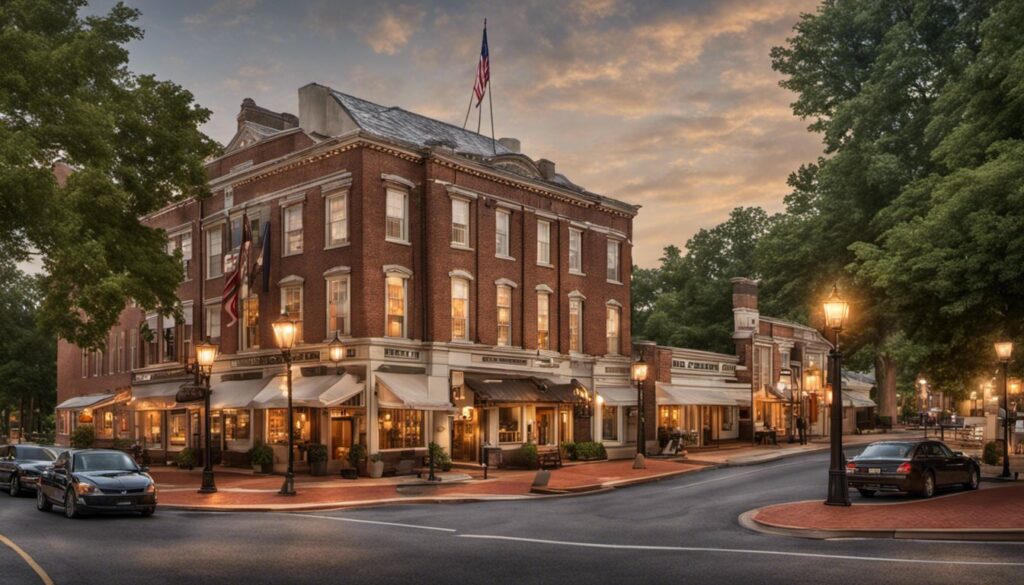Table Of Content
- Explore Greensboro’s Rich History: A Listicle of Famous Landmarks and Historical Sites!
- Historical Significance of Greensboro, North Carolina
- Famous Landmarks and Historic Sites
- Museums and Educational Attractions
- Gardens and Natural Wonders
- Historic Colleges and Universities
- Historic Homes and Estates
- Historic Towns and Cities
- World War II and Civil Rights History
- Preservation and Future of Greensboro’s Historic Sites
- Conclusion
- Frequently Asked Questions
Explore Greensboro’s Rich History: A Listicle of Famous Landmarks and Historical Sites!


Are you planning a trip to Greensboro, North Carolina and looking for some historical sites and famous landmarks to explore? Look no further than this listicle of must-visit places in Greensboro. From museums and educational attractions to gardens and natural wonders, there is something for everyone in this vibrant city.
Greensboro has a rich history dating back to the Revolutionary War and Civil Rights Movement. This city played a significant role in both of these events, and you can explore this history by visiting famous landmarks and historic sites such as the International Civil Rights Center and Museum and the Guilford Courthouse National Military Park. Whether you’re a history buff or just interested in learning more about the past, these sites offer a unique glimpse into the city’s fascinating history.
In addition to historical sites, Greensboro also boasts several museums and educational attractions, including the Greensboro Science Center and the Weatherspoon Art Museum. These sites offer a fun and interactive way to learn about science, art, and culture. And if you’re looking to relax and enjoy some natural beauty, be sure to visit the Tanger Family Bicentennial Garden or the Bog Garden at Benjamin Park. These stunning gardens are a true oasis in the heart of the city.
Key Takeaways
- Greensboro, North Carolina is home to a variety of historical sites and famous landmarks that offer a glimpse into the city’s rich history.
- In addition to historical sites, Greensboro also boasts several museums and educational attractions that offer a fun and interactive way to learn about science, art, and culture.
- The city’s stunning gardens and natural wonders provide a relaxing escape from the hustle and bustle of city life.
Historical Significance of Greensboro, North Carolina


Greensboro, North Carolina, has a rich and diverse history that spans centuries. From the Saura and Keyauwee Indians who were the earliest inhabitants of Piedmont North Carolina to the German, Quaker, Welsh, and English settlers who came to the Piedmont from Northern colonies around 1740, Greensboro has been a hub of activity for centuries.
During the American Revolution, the Battle of Guilford Courthouse took place in Greensboro, which was a significant battle that helped pave the way for American independence. Many of the local landmarks and monuments in Greensboro commemorate the brave soldiers who fought in this battle.
During the Civil War, Greensboro was a crucial location for the Confederacy, as it served as a major transportation hub for troops and supplies. The city played a significant role in the war effort, and many of its landmarks and buildings were used as hospitals and barracks during the war.
In World War II, Greensboro played a vital role in the war effort, as it was home to the Overseas Replacement Depot, which processed thousands of soldiers who were sent overseas to fight in the war. The city also had several manufacturing plants that produced war materials and weapons.
In addition to its role in various wars, Greensboro has also played a significant role in the civil rights movement. In 1960, the Greensboro Four, four black college students, staged a sit-in at a local Woolworth’s store to protest segregation. This event sparked a wave of sit-ins across the country and helped to bring about significant changes in civil rights laws.
Overall, Greensboro’s history is rich and diverse, and there are many landmarks and monuments throughout the city that commemorate its past. Whether you’re interested in the American Revolution, the Civil War, World War II, or the civil rights movement, Greensboro has something to offer for everyone.
Famous Landmarks and Historic Sites


If you’re planning a trip to Greensboro, North Carolina, you’re in for a treat. This charming city is home to a wealth of famous landmarks and historic sites that are sure to excite any history buff or curious traveler. From the National Register of Historic Places to state parks and points of interest, there’s something for everyone to explore.
One of the most iconic landmarks in Greensboro is the Blandwood Mansion. This historic site was built in 1795 and is now open to the public for tours. You can step back in time and explore the mansion’s stunning architecture and beautiful gardens, as well as learn about the history of the home and its former residents.
If you’re interested in military history, be sure to visit the Fort Fisher State Historic Site. This site played a crucial role in the Civil War and is now home to a museum and interpretive center, as well as a number of historic structures and monuments.
For a glimpse into North Carolina’s Native American history, visit the Town Creek Indian Mound State Historic Site. This site features a reconstructed ceremonial center and a museum with exhibits on the region’s indigenous peoples.
Another must-see landmark in Greensboro is the Chowan County Courthouse. This historic building dates back to 1767 and is one of the oldest courthouses in the state. It’s also listed on the National Register of Historic Places and is a prime example of colonial architecture.
If you’re interested in exploring the state’s political history, be sure to visit the North Carolina State Capitol. This historic building was completed in 1840 and served as the state’s capital until 1888. Today, it’s open to the public for tours and features exhibits on the state’s political history.
Finally, no trip to Greensboro would be complete without a visit to the Roanoke Island Festival Park. This state park features a number of historic sites and exhibits, including a replica of the Elizabeth II ship that brought the first English settlers to the area.
Whether you’re a history buff or just looking for some fun and interesting things to do in Greensboro, these famous landmarks and historic sites are sure to impress.
Museums and Educational Attractions


If you’re a history buff, Greensboro has plenty of museums and educational attractions to satisfy your curiosity. Here are a few must-visit places to learn about the city’s rich history:
- USS North Carolina Battleship Memorial – Step aboard the Battleship North Carolina and learn about the brave men who served on this iconic ship during World War II. You’ll get a firsthand look at what life was like for the sailors who lived and worked on the ship, and you’ll gain a deeper appreciation for their sacrifices.


Reed Gold Mine – Take a trip back in time to the early days of gold mining in North Carolina at the Reed Gold Mine. You’ll learn about the history of gold mining in the state and get a chance to pan for gold yourself. Who knows? You might just strike it rich!


- Guilford Courthouse National Military Park – This park is dedicated to the Battle of Guilford Courthouse, a pivotal moment in the Revolutionary War. You can explore the battlefield, visit the museum, and learn about the brave soldiers who fought for our country’s independence.


- Bentonville Battlefield – Another important battlefield from the Civil War, Bentonville Battlefield is a must-visit for anyone interested in the history of the conflict. You can take a guided tour, explore the museum, and learn about the soldiers who fought and died here.


- Thomas Wolfe Memorial – This historic home was once the childhood home of author Thomas Wolfe. You can take a tour of the house and learn about Wolfe’s life and work. It’s a great way to get a glimpse into the life of one of North Carolina’s most famous writers.


These are just a few of the many museums and educational attractions you can visit in Greensboro. Whether you’re a history buff or just looking to learn something new, there’s something for everyone in this vibrant city.
Gardens and Natural Wonders


You are in for a treat if you love exploring nature’s beauty. Greensboro, North Carolina, has an abundance of natural wonders and gardens that are worth a visit. From the Blue Ridge Mountains to the state parks, you can immerse yourself in the great outdoors and soak in the breathtaking scenery.
One of the most popular natural wonders in North Carolina is the Great Smoky Mountains National Park. With over 800 miles of hiking trails, you can explore the park’s diverse flora and fauna. The park is home to several waterfalls, including the beautiful Rainbow Falls, which cascades from a height of 150 feet.
Another natural wonder worth visiting is Mount Mitchell. This mountain is the highest peak east of the Mississippi River and offers stunning panoramic views of the surrounding landscape. You can hike to the summit or take a scenic drive to the top.
If you want to explore the coast, head to the Outer Banks, where you can visit the Wright Brothers National Memorial and the Cape Hatteras Lighthouse. The memorial commemorates the first powered flight by the Wright Brothers in 1903, while the lighthouse stands tall as a beacon for sailors and fishermen.
For those who love gardens, Greensboro has several options. The Tanger Family Bicentennial Garden is a beautiful spot to relax and enjoy the colorful blooms. The garden features a variety of plants, including roses, irises, and daylilies. The Greensboro Arboretum is another must-visit garden, with over 14 acres of beautifully landscaped grounds.
Hanging Rock State Park is another natural wonder that should be on your list. The park is home to several hiking trails, waterfalls, and scenic vistas. You can also go rock climbing, fishing, or camping in the park.
In summary, Greensboro, North Carolina, has a lot to offer for those who love exploring nature’s beauty. From the Blue Ridge Mountains to the state parks and gardens, there are plenty of options to choose from. So pack your bags, grab your camera, and get ready for an adventure you won’t forget!
Historic Colleges and Universities


Greensboro, North Carolina is home to several historic colleges and universities that have played a significant role in shaping the city’s educational landscape. Whether you’re a history buff or simply curious about the area’s past, these institutions offer a glimpse into the region’s rich cultural heritage.
One of the most notable colleges in Greensboro is the University of North Carolina at Greensboro (UNCG). Founded in 1891, UNCG has a long and storied history that spans more than a century. The campus is home to several historic buildings, including the iconic Foust Building, which was constructed in 1892 and is listed on the National Register of Historic Places.
Another historic institution in Greensboro is Bennett College, a private liberal arts college for women that was founded in 1873. The college has a rich history of empowering women and promoting social justice, and its campus is home to several buildings that are listed on the National Register of Historic Places. These include the Pfeiffer Science Hall, which was built in 1926, and the Annie Merner Pfeiffer Chapel, which was completed in 1938.
Greensboro is also home to Guilford College, a private liberal arts college that was founded in 1837 by Quakers. The college has a long and proud tradition of promoting peace and social justice, and its campus is home to several historic buildings, including the iconic Archdale Hall, which was built in 1937.
Finally, North Carolina Agricultural and Technical State University (NC A&T) is another historic institution in Greensboro that has played an important role in the city’s educational landscape. Founded in 1891 as the Agricultural and Mechanical College for the Colored Race, NC A&T has a rich history of promoting diversity and inclusion. Its campus is home to several historic buildings, including the Dudley Building, which was constructed in 1920 and is listed on the National Register of Historic Places.
Whether you’re interested in exploring the history of Greensboro’s educational institutions or simply want to soak up the atmosphere of these historic campuses, there’s plenty to discover in this vibrant city.
Historic Homes and Estates


Greensboro, North Carolina is home to many historic homes and estates that are open to the public for tours. These homes offer a glimpse into the past and are a great way to learn about the history of the area. Here are some of the most notable historic homes and estates in Greensboro:
Blandwood


Blandwood is a historic home that was built in 1795 and is now a museum. It was the home of North Carolina Governor John Motley Morehead and is one of the oldest homes in Greensboro. The home has been restored to its original condition and features period furniture and decor. Visitors can take a guided tour of the home and learn about its history.
Tryon Palace


Tryon Palace is a historic home in New Bern, North Carolina that was completed in 1770 for Royal Governor William Tryon and his family. It served as the first permanent capitol of North Carolina. The home has been restored to its original condition and features period furniture and decor. Visitors can take a guided tour of the home and learn about its history.
Carl Sandburg Home


The Carl Sandburg Home in Flat Rock, North Carolina was the home of Pulitzer Prize-winning poet and author Carl Sandburg. The home is now a museum and features exhibits on Sandburg’s life and work. Visitors can take a guided tour of the home and learn about Sandburg’s life and the history of the area.
Connemara


Connemara was the home of Pulitzer Prize-winning author Carl Sandburg and is now a museum. The home is located in Flat Rock, North Carolina and features exhibits on Sandburg’s life and work. Visitors can take a guided tour of the home and learn about Sandburg’s life and the history of the area.
Bellamy Mansion


The Bellamy Mansion in Wilmington, North Carolina was built in 1859 and is a prime example of antebellum architecture. The home has been restored to its original condition and features period furniture and decor. Visitors can take a guided tour of the home and learn about its history.
Biltmore Estate


The Biltmore Estate in Asheville, North Carolina is one of the most famous homes in the United States. It was built by George Vanderbilt in the late 1800s and is now a museum. The home features 250 rooms, including a library, banquet hall, and indoor pool. Visitors can take a guided tour of the home and learn about its history.
Brunswick Town


Brunswick Town is a historic site in Winnabow, North Carolina that was once a thriving port town. The site features the ruins of colonial buildings and a museum with exhibits on the history of the area. Visitors can take a guided tour of the site and learn about its history.
Overall, Greensboro, North Carolina is home to many historic homes and estates that are open to the public for tours. These homes offer a glimpse into the past and are a great way to learn about the history of the area.
Historic Towns and Cities


Greensboro is a city steeped in history, but it’s not the only historic town in North Carolina. There are many other cities and towns that are worth exploring if you’re interested in history.
One of the most historic towns in North Carolina is Wilmington. This beautiful coastal city is home to many historic sites, including the Bellamy Mansion Museum, the Burgwin-Wright House, and the Wilmington National Cemetery. If you’re interested in the Civil War, you can visit Fort Fisher State Historic Site, which played a key role in the conflict.
Asheville is another historic city that’s worth a visit. This charming mountain town is home to the Biltmore Estate, which is one of the most famous landmarks in North Carolina. Built by George Vanderbilt in the late 19th century, this stunning estate is a must-see for anyone interested in history and architecture.
Halifax is a small town in northeastern North Carolina that played a big role in the American Revolution. The Halifax Historic District is home to many historic buildings, including the Eagle Tavern, the Montfort Hall, and the Sally Billy House. If you’re interested in the American Revolution, you won’t want to miss this historic town.
Flat Rock is a charming town in western North Carolina that’s known for its historic homes and beautiful scenery. The Flat Rock Historic District is home to many historic homes, including the Carl Sandburg Home National Historic Site, which was once the home of the famous poet and writer.
In addition to these historic towns, there are many other cities and towns in North Carolina that are worth exploring if you’re interested in history. Whether you’re interested in the Civil War, the American Revolution, or just the history of North Carolina, there’s something for everyone in this beautiful state.
World War II and Civil Rights History


If you’re a history buff, you’ll be excited to know that Greensboro, North Carolina has a rich history when it comes to both World War II and the Civil Rights Movement. Here are some of the must-see landmarks and sites that you won’t want to miss:
- The Civil Rights Museum – This museum is dedicated to the history of the Civil Rights Movement in Greensboro and the rest of the country. It’s located in the historic Woolworth building, where the famous sit-in protests took place in 1960. The museum features exhibits and artifacts that tell the story of the struggle for civil rights in America.


The International Civil Rights Center and Museum – This museum is another must-see for anyone interested in the Civil Rights Movement. It’s located in the same building as the Woolworth sit-ins and features exhibits and interactive displays that help visitors understand the history of the movement.


The Greensboro Historical Museum – This museum covers the history of Greensboro from its founding to the present day. It includes exhibits on World War II and the impact the war had on the city and its residents.


The Guilford Courthouse National Military Park – This park is a must-see for anyone interested in the history of the Revolutionary War. It was the site of the Battle of Guilford Courthouse in 1781, which was a pivotal moment in the war.


The War Memorial Auditorium – This auditorium was built in 1952 to honor the veterans of World War II. It’s now a popular venue for concerts and other events.


The Greensboro Coliseum Complex – This complex includes the Greensboro Coliseum, which was built in 1959 and was one of the largest arenas in the world at the time. It hosted many important events during the Civil Rights Movement, including a speech by Martin Luther King Jr. in 1964.


As you can see, Greensboro has a rich history when it comes to both World War II and the Civil Rights Movement. Whether you’re a history buff or just interested in learning more about these important periods in American history, there’s something for everyone to see and do in Greensboro.
Preservation and Future of Greensboro’s Historic Sites


You’re fortunate to live in a city that values its history and works hard to preserve its historic sites and landmarks. Greensboro has a long and rich history, and many of its historic sites have been preserved for future generations to appreciate. The city’s commitment to preservation is evident in the number of historic sites and landmarks that have been designated and protected.
The Southeast office of the National Trust for Historic Preservation has recognized Greensboro as a “Preservation Success Story” for its efforts to protect historic sites. The city has also received recognition from the Western North Carolina chapter of the American Institute of Architects for its preservation efforts.
The North Carolina Governor’s Mansion, which is located in Raleigh, is a testament to the state’s commitment to preserving its history. The mansion was built in 1891 and has been restored and preserved over the years. It serves as a symbol of the state’s rich history and is a popular tourist destination.
One of Greensboro’s most historic sites is the O. Henry Hotel, which was built in 1919 and has been beautifully restored. The luxury hotel is a popular destination for tourists and locals alike, and its preservation is a testament to the city’s commitment to preserving its history.
In addition to preserving historic sites, Greensboro is also committed to ensuring that these sites are accessible to the public. The city has created an interactive map that allows you to find historic properties and districts near you. This makes it easy to explore the city’s rich history and appreciate the efforts that have been made to preserve it.
Overall, Greensboro’s commitment to preserving its history is something to be excited about. The city’s efforts have been recognized by organizations across the state and the country, and its historic sites and landmarks are a testament to its rich history.
Conclusion
Congratulations! You have just discovered some of the most fascinating historical sites and famous landmarks in Greensboro, North Carolina. From the iconic Greensboro Station to the historic Tannenbaum Historical Park, Greensboro is a city that truly celebrates its rich history.
As you explore the city’s many attractions, you’ll be amazed by the diverse range of architecture styles, including Art Deco, Victorian, and Gothic Revival. Whether you’re a history buff or just looking for a fun day out with family and friends, Greensboro has something for everyone.
Don’t forget to visit the National Military Park at Guilford Courthouse, where you can learn about the Revolutionary War and the brave soldiers who fought for our freedom. And if you’re interested in street art, be sure to check out the vibrant murals and installations at Kotis Street Art.
Overall, Greensboro is a city that is proud of its past and excited about its future. With so many incredible sights to see, it’s no wonder that people from all over the world come to visit this beautiful city. So what are you waiting for? Start planning your trip to Greensboro today and discover all that this amazing city has to offer!
Frequently Asked Questions
What are the top must-see historical landmarks in Greensboro, NC?
Greensboro is home to many historical landmarks that are worth visiting. Some of the top must-see historical landmarks in Greensboro include the Guilford Courthouse National Military Park, Blandwood Mansion, and the International Civil Rights Center and Museum.
What is the significance of the Greensboro Four Sit-In and where can I see it?
The Greensboro Four Sit-In was a pivotal moment in the Civil Rights Movement, where four African American college students staged a sit-in at a segregated lunch counter in Greensboro. Today, you can visit the Woolworth’s building where the sit-in took place, which has been transformed into the International Civil Rights Center and Museum.
Which historical sites in Greensboro have been preserved the best?
Many historical sites in Greensboro have been well-preserved, but some of the best-preserved sites include the Blandwood Mansion, the Tannenbaum Historic Park, and the Guilford Courthouse National Military Park.
What is the oldest historical site in Greensboro, NC?
The oldest historical site in Greensboro is the First Presbyterian Church, which was established in 1824. The church building itself was completed in 1826 and still stands today.
What famous people have visited Greensboro, NC and where did they go?
Over the years, many famous people have visited Greensboro, including Martin Luther King Jr., who spoke at Bennett College in 1958, and Barack Obama, who held a campaign rally at the Greensboro Coliseum in 2008.
What are some hidden gems for history buffs in Greensboro, NC?
If you’re a history buff, you won’t want to miss the Greensboro Historical Museum, which houses a collection of artifacts and exhibits that tell the story of Greensboro’s past. You may also want to visit the Tannenbaum Historic Park, which features a collection of historic buildings and gardens, or the Charlotte Hawkins Brown Museum, which tells the story of Charlotte Hawkins Brown and the Palmer Memorial Institute.

